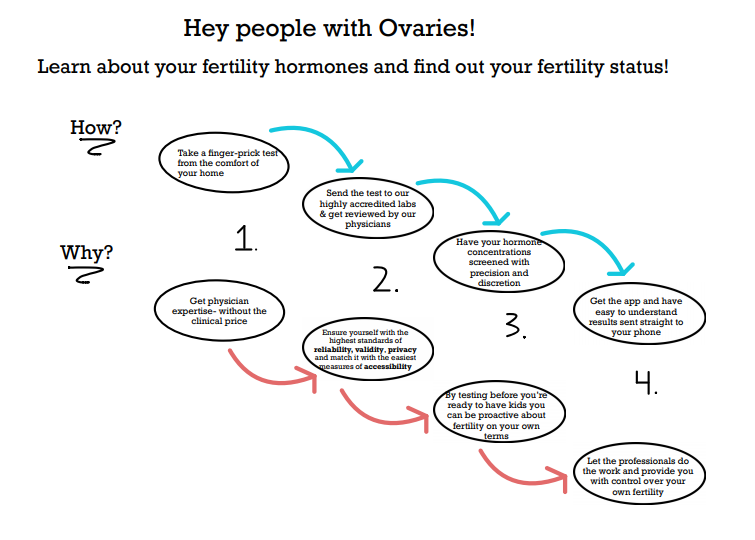7 Application of the Technology Acceptance Model
Georgia L. Burgess & Amber K. Worthington
An increasing number of people of childbearing age are lesbian, gay, bisexual, transgender, queer, and other (LGBTQ+; Harris Poll, 2017). LGBTQ+ individuals have the same interests as cis heterosexual people in accessing reproductive health services and having children (e.g., Ethics Committee of the American Society of Reproductive Medicine, 2015; Wingo et al., 2018) but have faced persistent issues accessing high quality, affirming reproductive healthcare services (Hayman et al., 2013; Wingo et al., 2018). Therefore, an alternative technology offering outside of the traditional structure and facilities of reproductive healthcare may be essential to individuals and couples with unique conception and family planning needs. Reproductive hormone self-collection tests are a new technology on the consumer market that may be particularly useful for LGBTQ+ individuals and couples (Burke, Beqaj, Douglas, & Luo, 2019; Kyweluk, 2020).
Worthington, Burke, Shirazi, and Leahy (2020) used the Technology Acceptance Model to womens’ intentions to use reproductive hormone self-collection tests. The study included a convenience sample of 327 women in the United States. The study used an observational design and asked the participants to self-report on the main predictors in the Technology Acceptance Model (perceived usefulness, perceived ease of use), additional predictors (perceived risk, trust, subjective norms, and responsibility), and intentions to use reproductive hormone self-collection tests. The findings indicated that perceived usefulness, perceived ease of use, subjective norms, and responsibility predicted intentions. Responsibility and perceived usefulness had the strongest influence on intentions. These results are correlational, not causational, due to the observational nature of the study design. The results cannot be generalized due to the convenience sample. The authors did find theoretical support for the Technology Acceptance Model and its extensions. Their results also indicate that responsibility may be an additional variable that influences intentions to use a particular technology.
The Technology Acceptance Model can be applied to design messages to persuade LGBTQ+ individuals with ovaries to intend to use reproductive hormone self-collection tests. Modern Fertility is one company that provides these tests with the goal of enabling people with ovaries to be able to take control of their own fertility in the comfort of their homes at an affordable price. Modern Fertility’s messaging contains components that could increase an individual’s perceived usefulness and ease of use of reproductive hormone self-collection tests, which, according to the Technology Acceptance Model, would increase their intentions. For example, Modern Fertility’s messaging places emphasis on the reasons to use such a test, which can increase an individual’s perceived usefulness. They also utilize a slogan of “the only comprehensive fertility hormone test you can take in your jammies”, which can increase an individual’s perceived ease of use.
Example by Georgia L. Burgess
This message is designed using the Technology Acceptance Model and incorporates the original variables in the model, including perceived usefulness and perceived ease of use, as well as variables in the extensions of the model, including perceived risk, trust, and subjective norms. I designed this message in a way that I hope will speak to the target audience of LGBTQ+ individuals most effectively.
By starting the message with “Hey people with Ovaries”, I wanted to set the tone with inclusive language to effectively target all people with ovaries, including those who are LGBTQ+.
The subheader “…find out about your fertility status” is the starting point for increasing perceived usefulness of reproductive hormone self-collection tests. The following section of “How?” is written to incorporate some impactful information to establish a strong sense of perceived usefulness and ease of use. The next element, “Why” focuses on reducing potential consequences (perceived risk) and amplifying the benefits of the product (perceived usefulness). Trust is incorporated into the message using words such as reliability, validity, privacy, and accessibility. Together, these message features effectively integrate all of the variables in the Technology Acceptance Model in a nuanced way that makes the message receptive and relevant without overloading an individual with too much information.

References
Burke, E. E., Beqaj, S., Douglas, N. C., & Luo, R. (2019). Concordance of fingerstick and venipuncture sampling for fertility hormones. Obstetrics & Gynecology, 133(2), 343-348.
Ethics Committee of the American Society for Reproductive Medicine. (2015). Access to fertility services by transgender persons: An Ethics Committee opinion. Fertility and Sterility, 104(5), 1111-1115.
Harris Poll. (2017). Accelerating acceptance 2017: A Harris Poll survey of Americans’ acceptance of LGBTQ people. Retrieved from https://www.glaad.org/files/aa/2017_GLAAD_Accelerating_Acceptance.pdf
Hayman, B., Wilkes, L., Halcomb, E., & Jackson, D. (2013). Marginalised mothers: Lesbian women negotiating heteronormative healthcare services. Contemporary Nurse, 44(1), 120-127.
Kyweluk, M. (2020). Quantifying fertility? Direct-to-consumer ovarian reserve testing and the new (in)fertility pipeline. Social Science & Medicine, 245, 112697.
Wingo, E., Ingraham, N., & Roberts, S. C. (2018). Reproductive health care priorities and barriers to effective care for LGBTQ people assigned female at birth: A qualitative study. Women’s Health Issues, 28(4), 350-357.
Worthington, A. K., Burke, E. E., Shirazi, T. N., & Leahy, C. A. (2020). U.S. women’s perceptions and acceptance of new reproductive health technologies. Women’s Health Reports, 1(1), 402-412.

